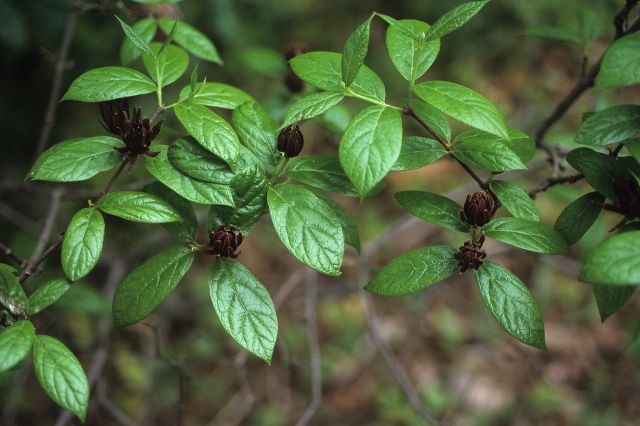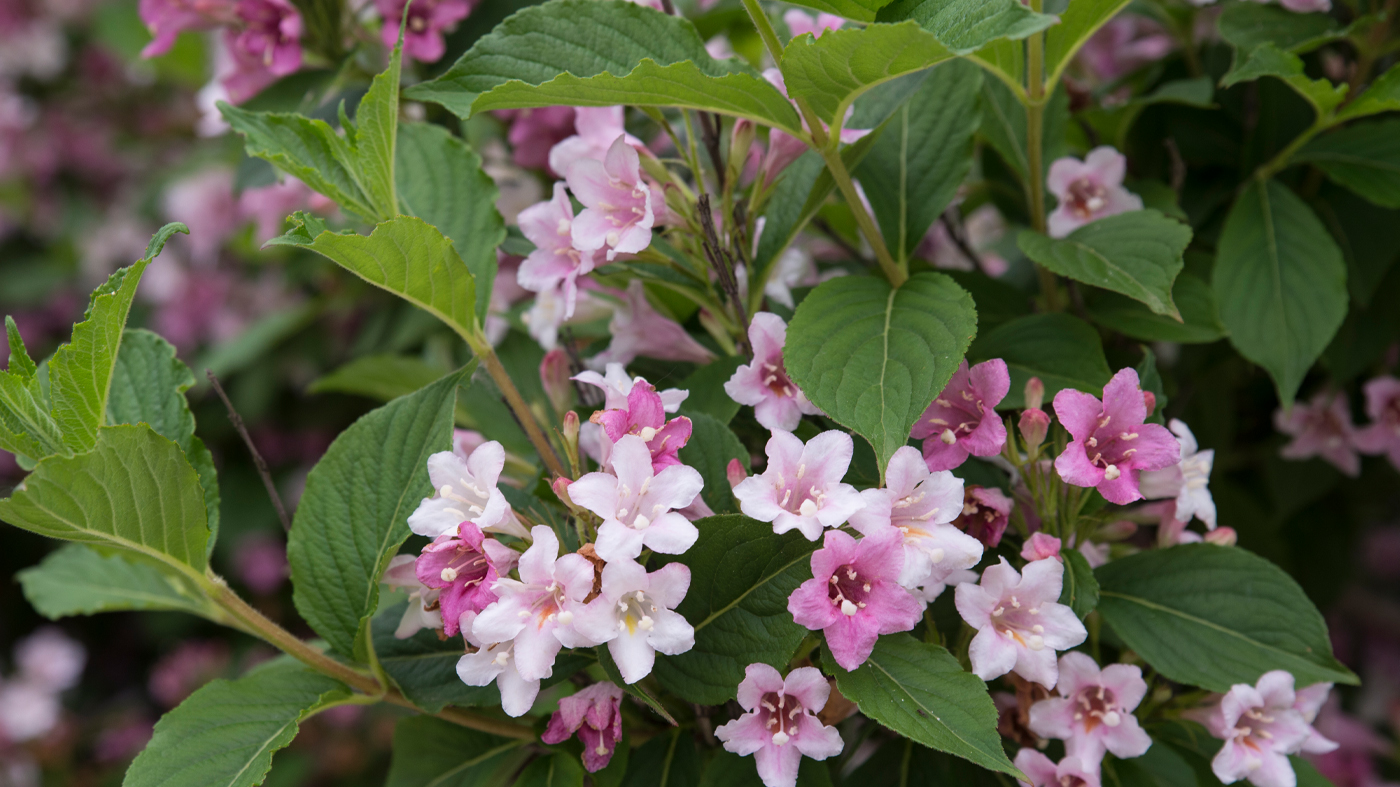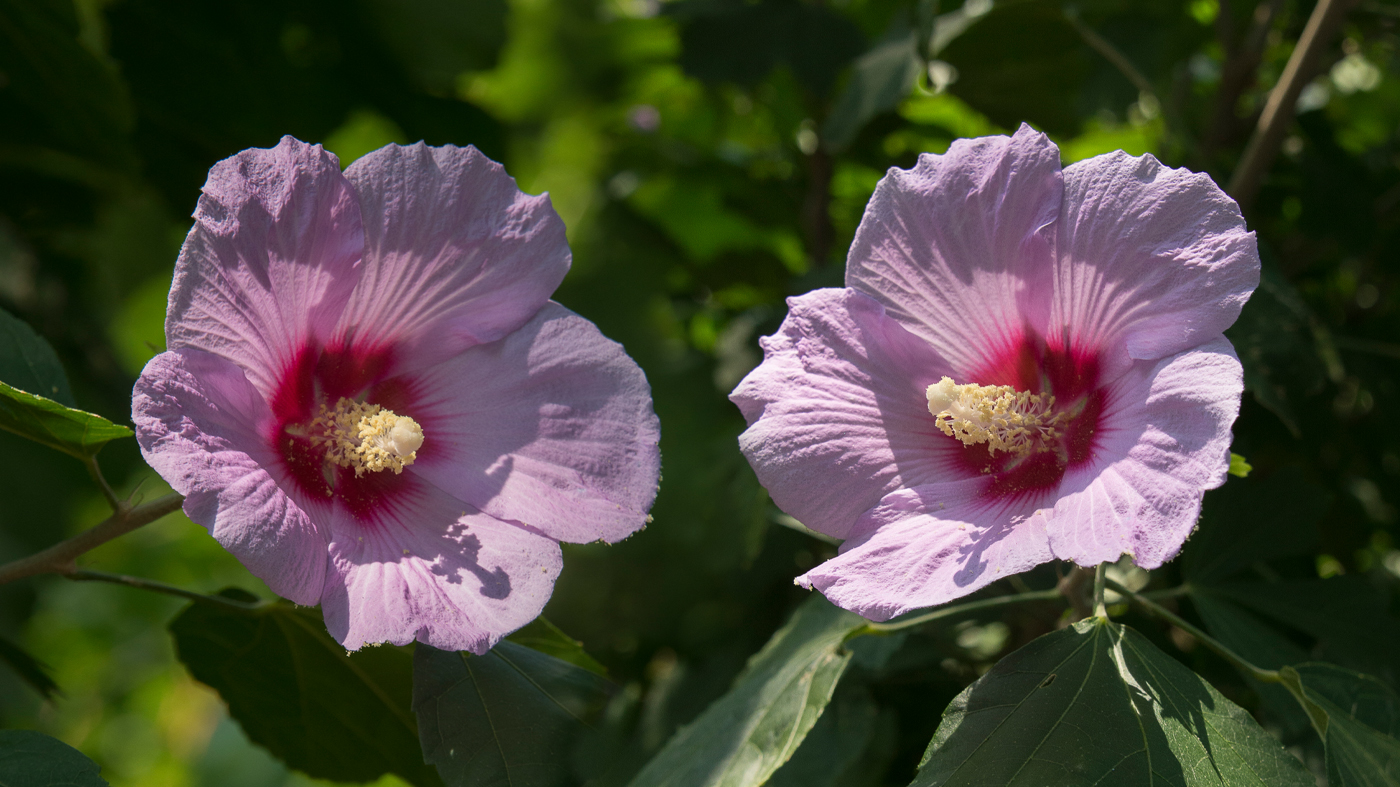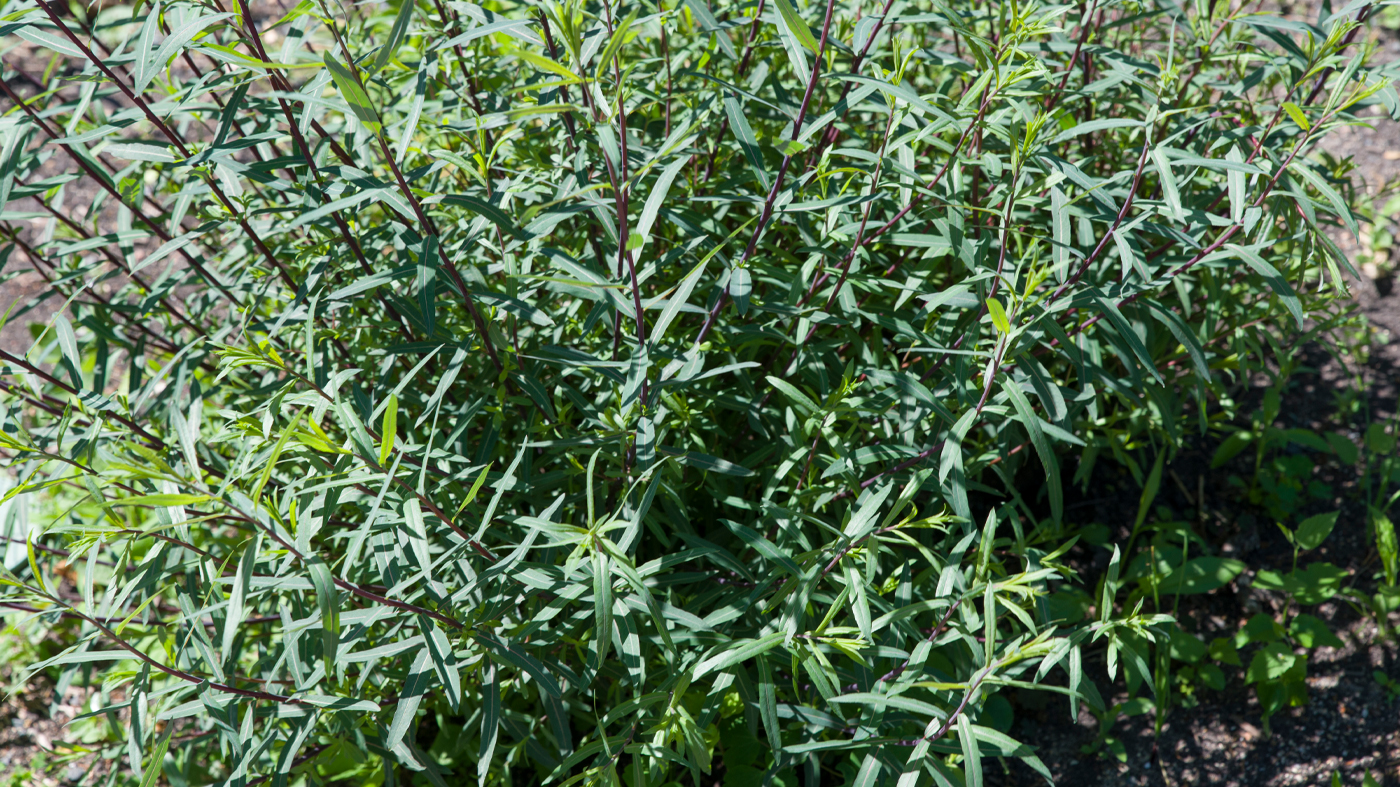Replacing this year? Five to consider.
Last winter was hard on us all…especially on the trees and shrubs that took the brunt of winter winds, sub-zero temperatures, and heavy snow. As spring progressed, the damage was revealed: winter burn on evergreens (read our blog about it here), lots of dead branches, and, for many homeowners, the loss of key "hardscape" elements: the shrubs that are the backbone of many a yard and garden.
In this month's Smart Gardener, we look at shrubs that are worthy replacements for those that you may have lost this year. Unfamiliar with some of these? All are valuable in midwestern gardens, and well worth seeking out or requesting at local nurseries.

Northen bayberry shrubs (Myrica pensylvanica) look best when planted in groups.
Northern Bayberry (Myrica pensylvanica)
Bayberry could be the "foundation plant" you're looking for when evergreens are lost or it's time to replace those decades-old shrubs that have reached the end of their life cycle.
Native to the east coast, bayberry is a quiet shrub—loosely mounded in shape, at about six feet tall, bayberries look best massed together rather than as single specimens. Need to replace a hedge? It's a fine option.
Bayberry is justly famous for its scent (think candles, soaps), found both in its long, leathery leaves (crush one to experience it) and in the waxy coating of its pretty little berry clusters that last through the winter.
Truly hardy (to zone 3), bayberry has several qualities that are of great garden value: it grows in full sun or a bit of shade, it's happy in poor or even wet soils, and it tolerates salt (think driveways, parkways, alleys).
Find bayberry in: Home Landscape Garden, Rose Garden

Bloom from April to July.
Carolina allspice (Calycanthus floridus)
Speaking of scent, the star magnolia-like, dark maroon flowers of Carolina allspice are wonderfully fragrant — a sweet scent that hints of strawberry, which is why the shrub is also called sweetshrub or strawberry bush. (Plant one near the deck or door so the fragrance can waft inside in May.)
Of particular note is the variety 'Athens', which boasts yellow flowers instead of maroon, and an exceptionally strong fragrance. Post-flowering, all allspice bear pear-shaped seed capsules (also fragrant when crushed) which last on the shrub well into winter.
As its name implies, Carolina allspice is native to the southeast — yet it's hardy to zone 4, well within our toughest winter limits. Size? Ultimately, plan on 6 to 10 feet, both in height and width. Soil? Average, well-drained soil is all that allspice needs. Importantly, it tolerates clay soils — a boon for most of us in the Chicago area. Light? Another reason to consider it: allspice grows in both full sun and full shade.
You'll need to sharpen your pruning skills a bit for this shrub: cut it back to shape after flowering, and keep suckers pulled/pruned to prevent naturalizing.
Find Carolina allspice in: Sensory Garden

Variegated weigela (Weigela florida 'Variegata') is one of many cultivars on the Garden grounds.
Weigela (Weigela florida)
Does this happen to you every spring? You see a gorgeous mound of arching flowers as you're driving through the neighborhood. You point. You wonder what it is.
Chances are, it's weigela (say wy-JEE-lah).
Once considered old-fashioned, weigela is experiencing a burst of renewed interest. Many of the beautiful new cultivars are dwarf in size, taming the original 6- to 9-foot height and spread to a more urban yard-appropriate 2 to 4 feet.
Weigela's dense, arching branches are covered with bell-like flowers in spring. While shades of pink dominate, new varieties mix in red or purple tones, often with foliage that is variegated with yellow or white, so the shrub appeals to the eye in three seasons. Wine and RosesR is the name-appropriate cultivar that boasts rosy flowers with dark purple foliage.
At the Lavin Plant Evaluation Garden, we are currently testing 15 cultivars. Smart gardeners can stop by in each season to compare colors, sizes, and habits. Or use our online Plant Finder to compare choices for your garden.
Plant weigela in full sun. And did we mention that it's a hummingbird magnet, too?
Find weigela in: Lavin Plant Evaluation Garden

Rose of Sharon (Hibiscus syriacus) produce a continuous supply of flowers throughout the summer and early fall.
Rose of Sharon (Hibiscus syriacus)
Rose of Sharon is to late summer as weigela is to spring — a show-stopper that's covered in beautiful blooms.
Its Latin genus tells you what to expect in terms of flower: big, showy, tropical-looking hibiscus flowers with long stamens at the center. Yet this Hibiscus is hardy enough for our winters. In fact, Rose of Sharon tolerates just about anything: poor soil, drought, heat, humidity, and city life in general.
Train Rose of Sharon into any shape you'd like; it's stunning as an espalier. Pruned as a small tree, it will reach to 12 feet in height. Other uses: hedge, screen, foundation planting, and late summer conversation piece in the border.
While you're at the Lavin Plant Evaluation Garden to see the weigela, check out our new trial of Hibiscus syriacus, just getting underway.
Find Rose of Sharon in: Lavin Plant Evaluation Garden

Salix purpurea 'Nana' has skinny, blue-green leaves.
Dwarf Willow (Salix sp.)
Everyone recognizes a willow. But not every gardener recognizes the much smaller, garden-appropriate dwarf or shrub willows.
Dotted throughout the grounds of the Garden are dozens of species and cultivars — our curator of woody plants, Dr. Andrew Bell, has been working to build our willow collection for several years. Look for basket willows, curly-branched willows, and pussy willows (the showy catkins of many species), especially along the outer road in the West Collections, as examples of the great variety now available in this genus.
Willows are a more dependable source of winter color than dogwoods, with stunning stem colors of yellow, red, orange, and purple — even blue — that reverberate against a snowy background. Salix 'Flame' is a good example: bright orange and a substantial 10 to 12 feet tall and wide, it's a knockout in any yard. Pruned in winter, the cut branches are wonderful for indoor/outdoor floral arrangements.
In summer, variegated leaves and stem colors combine to great effect. Salix integra 'Flamingo' is a dappled willow that sprouts pretty pink foliage in spring; Salix purpurea 'Nana' has skinny, blue-green leaves. Like the giant species, dwarf willows prefer full sun and moist conditions — site them in the low, damp spots in your yard.
Our friends at Vermont Willow Nursery have a wonderfully informative and organized website for willow hunters — yes, you can order from them, too.
Find dwarf willows in: Home Landscape Garden, West Collections
Karen Zaworski is a garden writer and photographer who lives and gardens in Oak Park, Illinois.

